Winter Harvest
15 March 2022Root crops are a staple of winter harvest! In 2021, I planted parsnips (an old favourite) but I also tried salsify and scorzonera. Unfortunately, I struggled to get scorzonera to germinate – there’ll be another attempt next year! Brussel sprouts and kale are also useful winter crops – surprisingly tasty for leaves that can stand up to winter weather!
Parsnip
I’m always looking for possible containers for my plants. Last year I repurposed an old “wheelbarrow” for my parsnips by drilling some holes in the bottom. It was deeper than a lot of the pots available from the shops and had the benefit that I could easily move it around whenever I needed to get past it! Unfortunately I then struggled to get compost but I’ll top it up for 2022!

I was a bit late sowing the seed (end March) as we had a late cold snap. I tried two different types but the seed wasn’t very fresh (and parsnip seed really doesn’t age well – regardless of the claims on the packet!), so only my “sabre” parsnips germinated. I used a mesh to protect the seeds and baby plants from pigeons – you can just see it in the top left hand corner.

The advice for parsnips is to wait until after a frost to get the best taste. For South Wales that was quite a long wait! But at the beginning of February, my wait was rewarded. By getting these so fresh from the ground – they just needed a clean, then chopped and roasted with a drizzle of honey. No need to create waste by peeling them! This year’s crop didn’t suffer as much slug damage as I’ve had in the past – perhaps because the compost was fresh for this crop.

Salsify
Salsify roots may look relatives of the parsnip, but salsify is actually more closely related to the dandelion (which also has an edible root)! Both belong to the Asteraceae family. Germination wasn’t great from a sowing at the beginning of May, but at least I got a couple of plants to taste! Next time I’ll sprinkle the seed more thickly and thin out if I get too many. I don’t usually follow this tactic because I’m a soft-hearted soul and hate pulling out viable plants, but needs must…

Salsify plants growing (9/7/21) 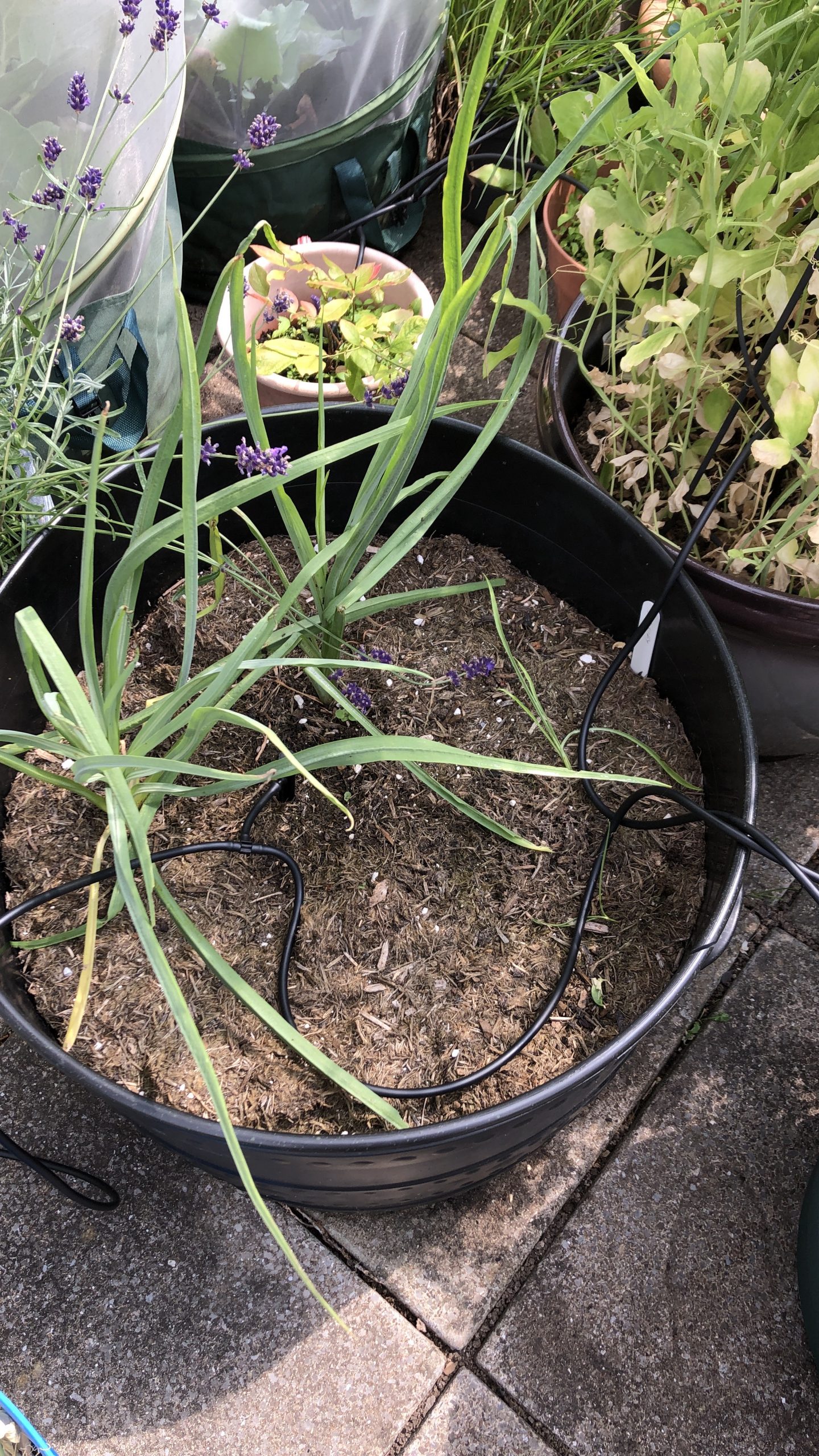
Salsify plants growing (25/7/21)
I could have harvested these back in autumn, but they stored well in the ground which makes it quite a flexible winter harvest plant. Despite being stored so long they didn’t show any slug damage, but they had been planted in fresh compost which probably helped. Salsify is quite ‘hairy’ in comparison to parsnip. I had expected to peel them but getting a peeler past the sideroots was not a task for the faint hearted. So I trimmed back the side roots and gave them a really good clean to get all the soil out (which means less waste anyway…). I was really impressed by the spiral pattern the side roots made! These got roasted as a parsnip replacement and were declared “lovely” by the parsnip gourmet! He particularly liked how the sideroots crisped up in the oven! I have heard that salsify is considered to be a “poor man’s oyster” – not having tasted oyster, I can’t comment – but definitely a lovely veg and one I’ll be growing again!

Brussel Sprouts
Having started life as a “townie”, I remember how delighted I was the first time I saw a brussel sprout stalk in a supermarket – wrapped in tinsel it became the centrepiece for xmas dinner! Since then, I’ve had a few attempts at growing them. They’re very attractive to pigeons and slugs – so this year I started my seedlings in a bag with it’s own mesh enclosure

If you get beyond that stage, the next problems are protecting them from caterpillars and supporting them as they get so tall! Most years mine keel over or grow partially across the ground – which brings the plumpest sprouts within easy reach of the slugs. Having read yet another set of guidance on growing brussel sprouts – next year I intend to top them to prevent them getting too tall.

Brussel sprouts transferred to veggie bed with netting (20/6/21) 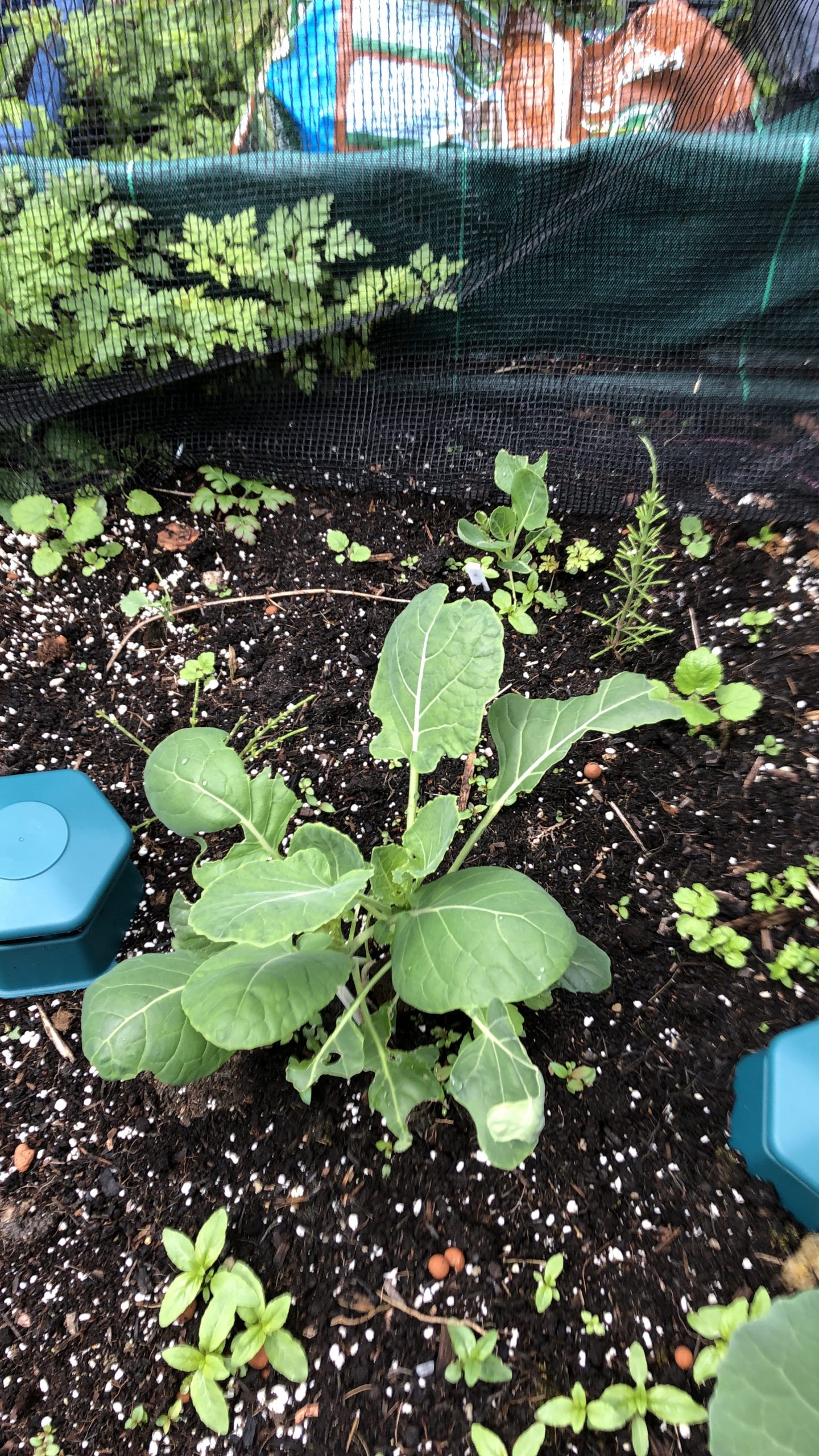
Brussel sprouts growing (26/6/21) 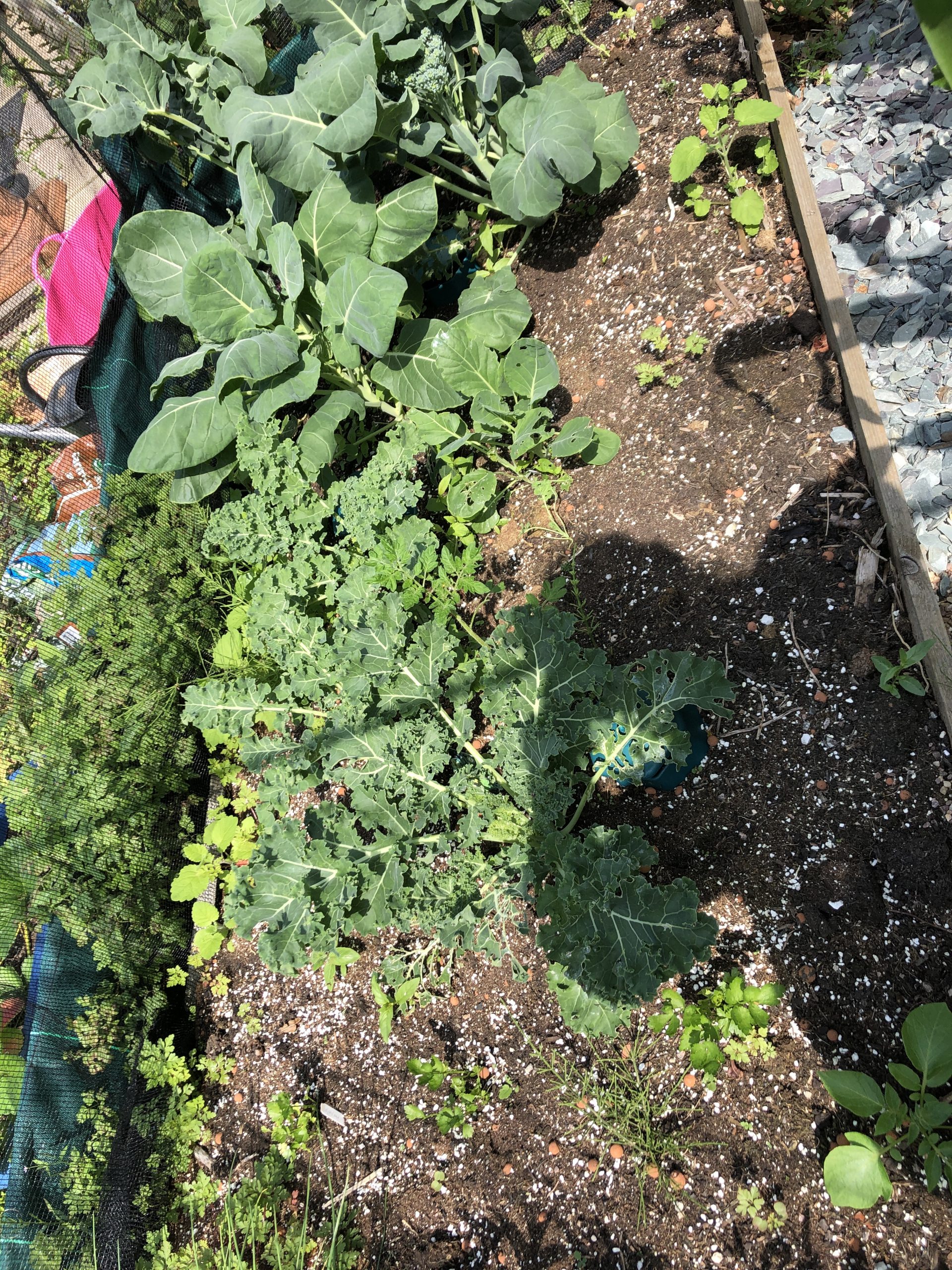
Brussel sprouts growing alongside kale and tenderstem broccoli (17/7/21)
A major advantage of growing brussel sprouts at home is that you get to eat the “crown of leaves”!

Brussel sprout “crown of leaves” harvested 5/2/22 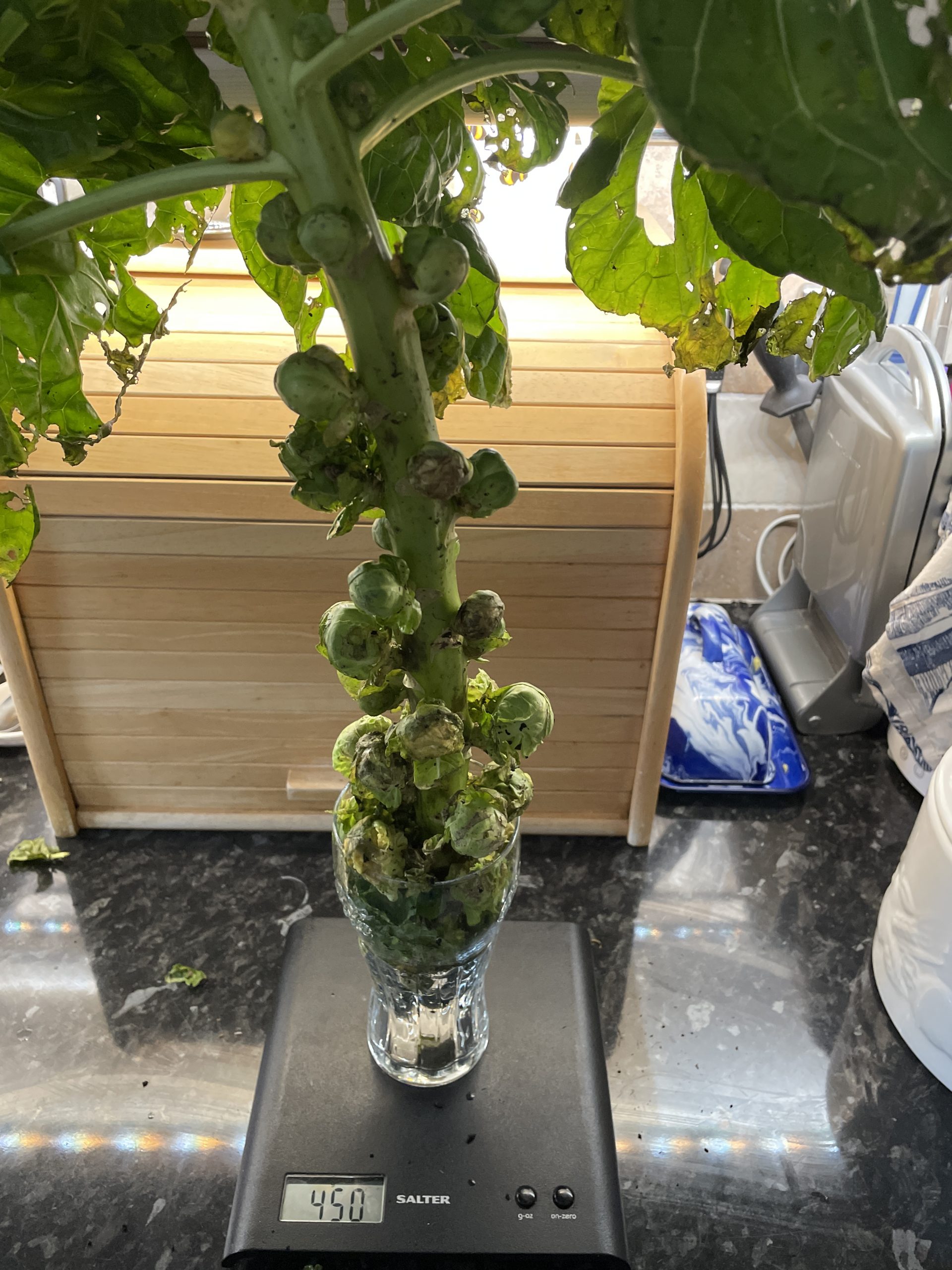
Brussel sprout stem harvested (6/2/22)
Kale
Kale is another useful crop for winter harvest. However, it can also last through the winter and start regrowth in spring making it a useful crop for the “hungry gap” (April – June) before other crops have developed enough to eat. Knowing that pigeons, slugs and caterpillars all find kale as delicious as I do, I try to find ways to protect them. In 2020, I grew kale in pots on the patio with a net over them. This provided some protection, but I wasn’t able to anchor the net securely and caterpillars penetrated the defences after the wind blew the net down and before I got the net back in place! This was a sad end to this attempt!

kale seedlings 7/6/20 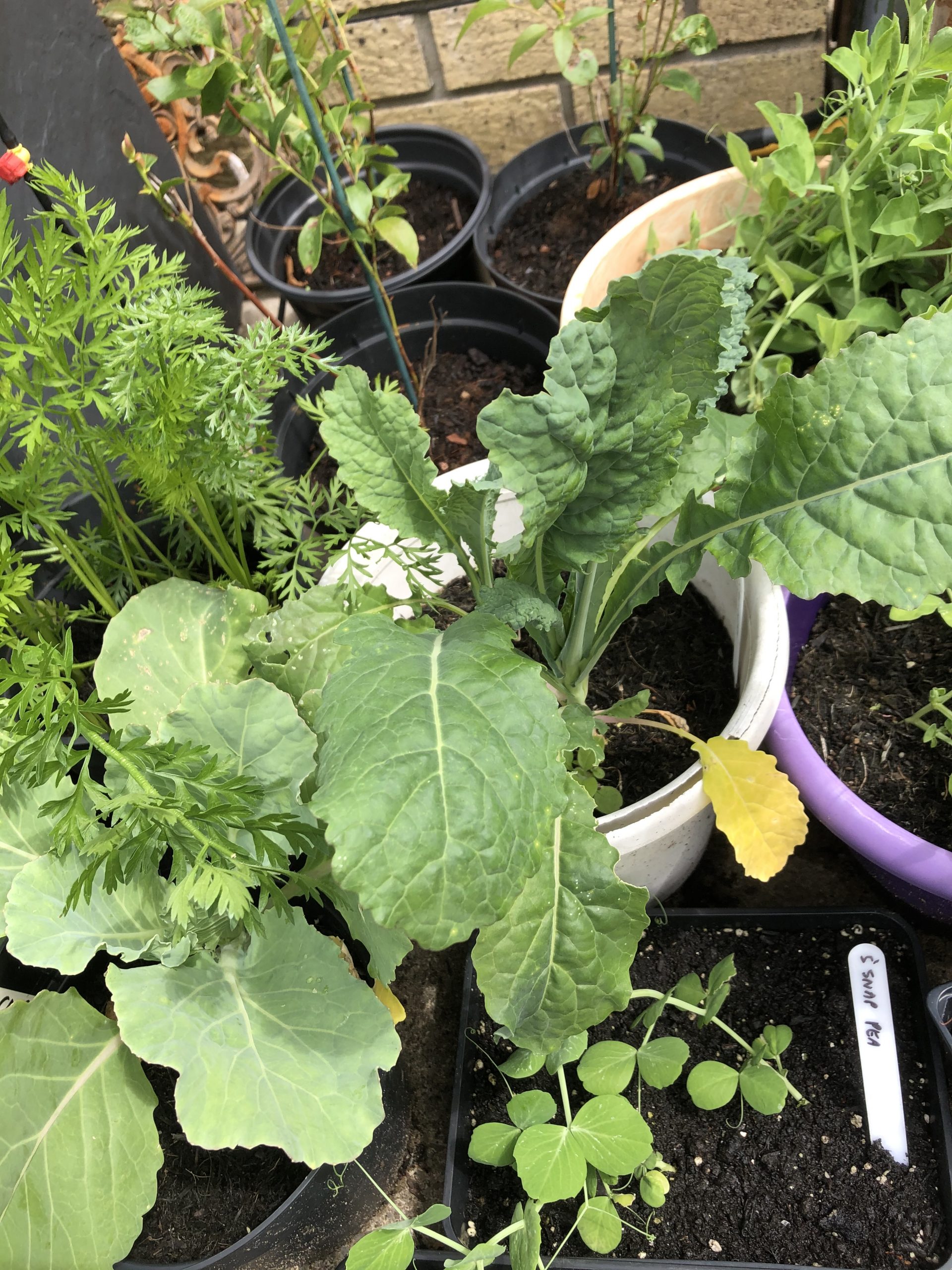
kale plant growing 28/6/20 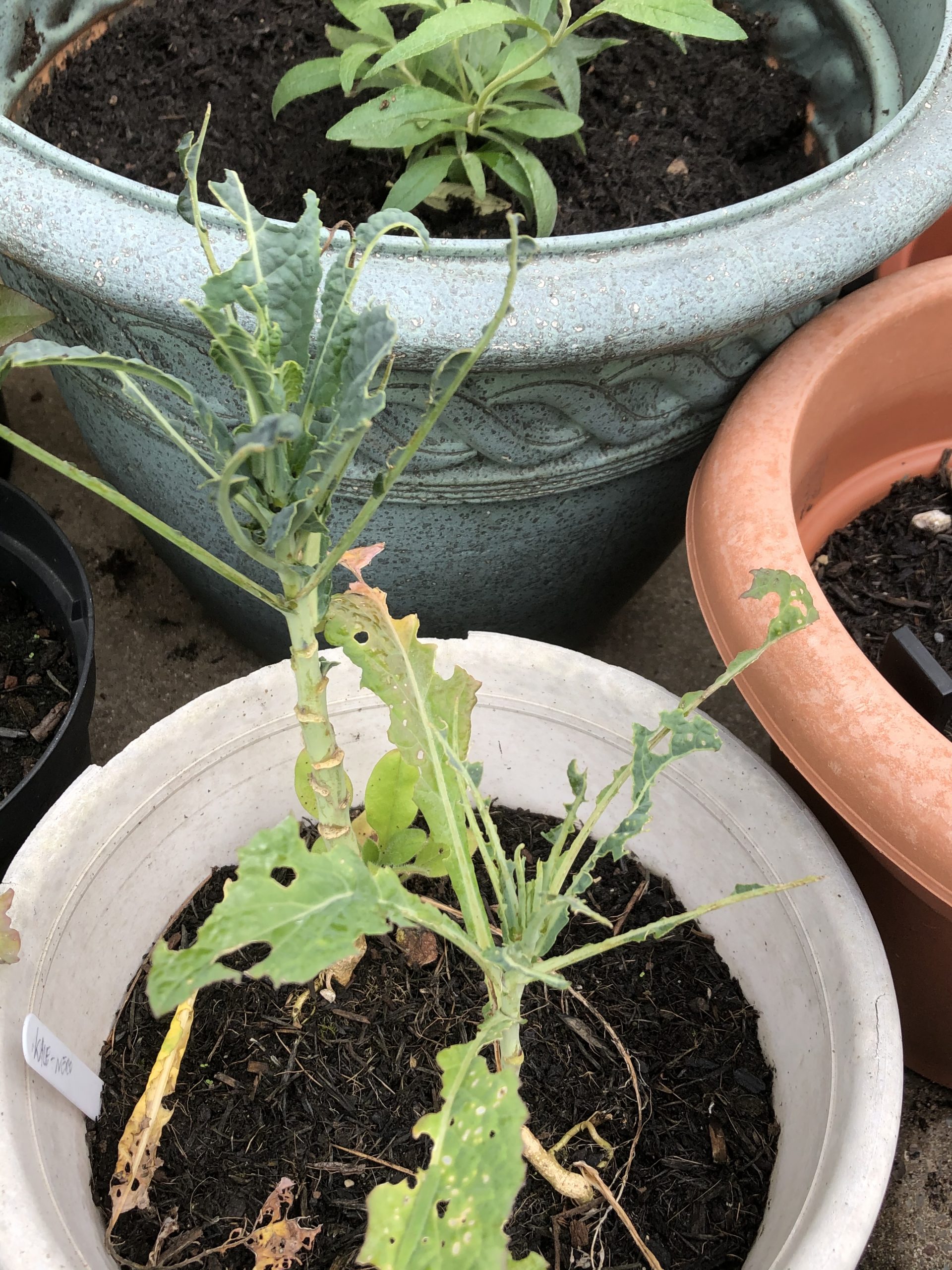
kale eaten by caterpillars 9/8/20
In 2021, I bought plantlets (those catalogues are so darn tempting…) and had another attempt but in a vegetable plot protected with a netted cage. Much better results!

kale plantlets (veggie bed with net) 14/6/21 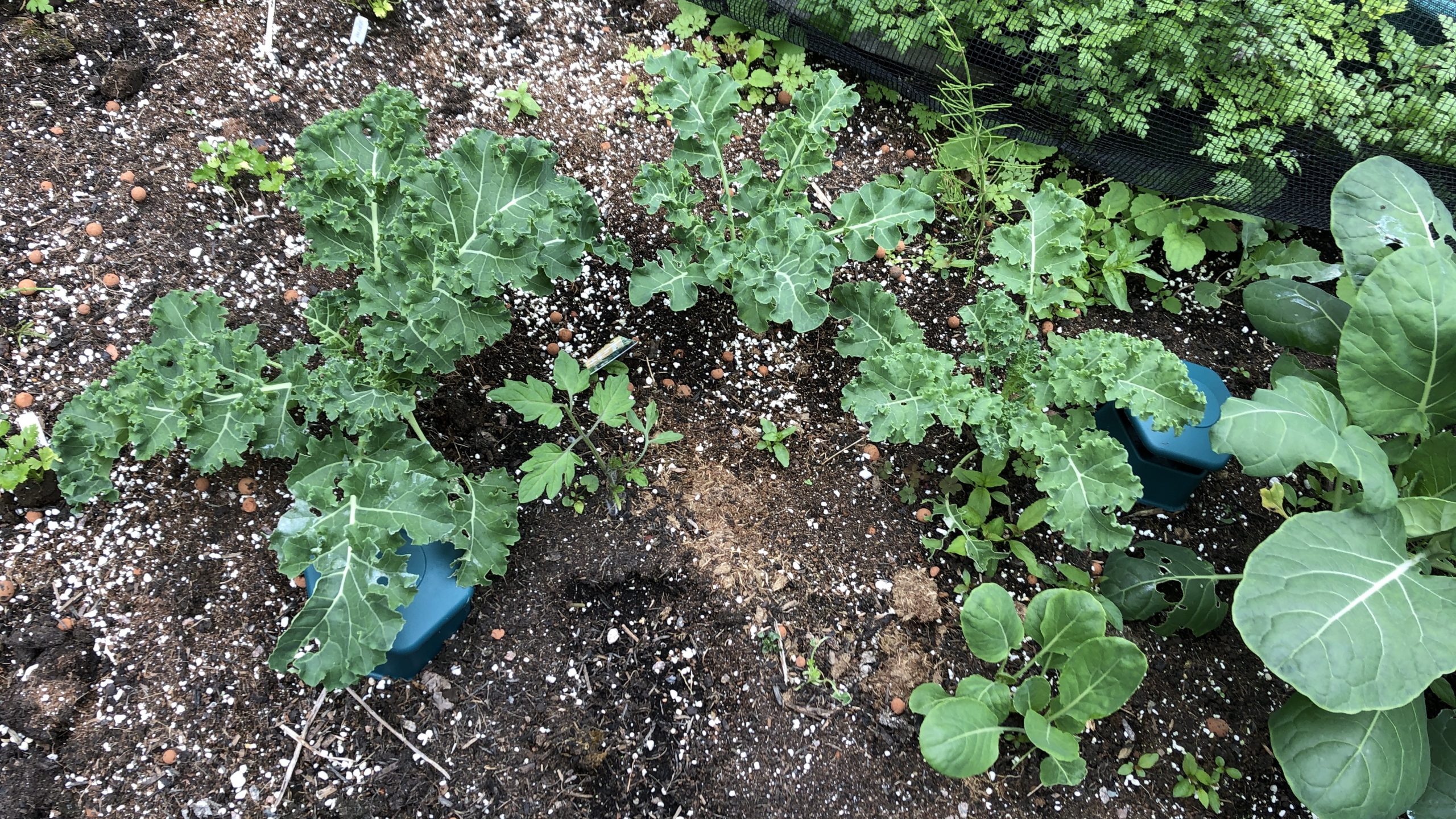
kale plants developing 9/7/21 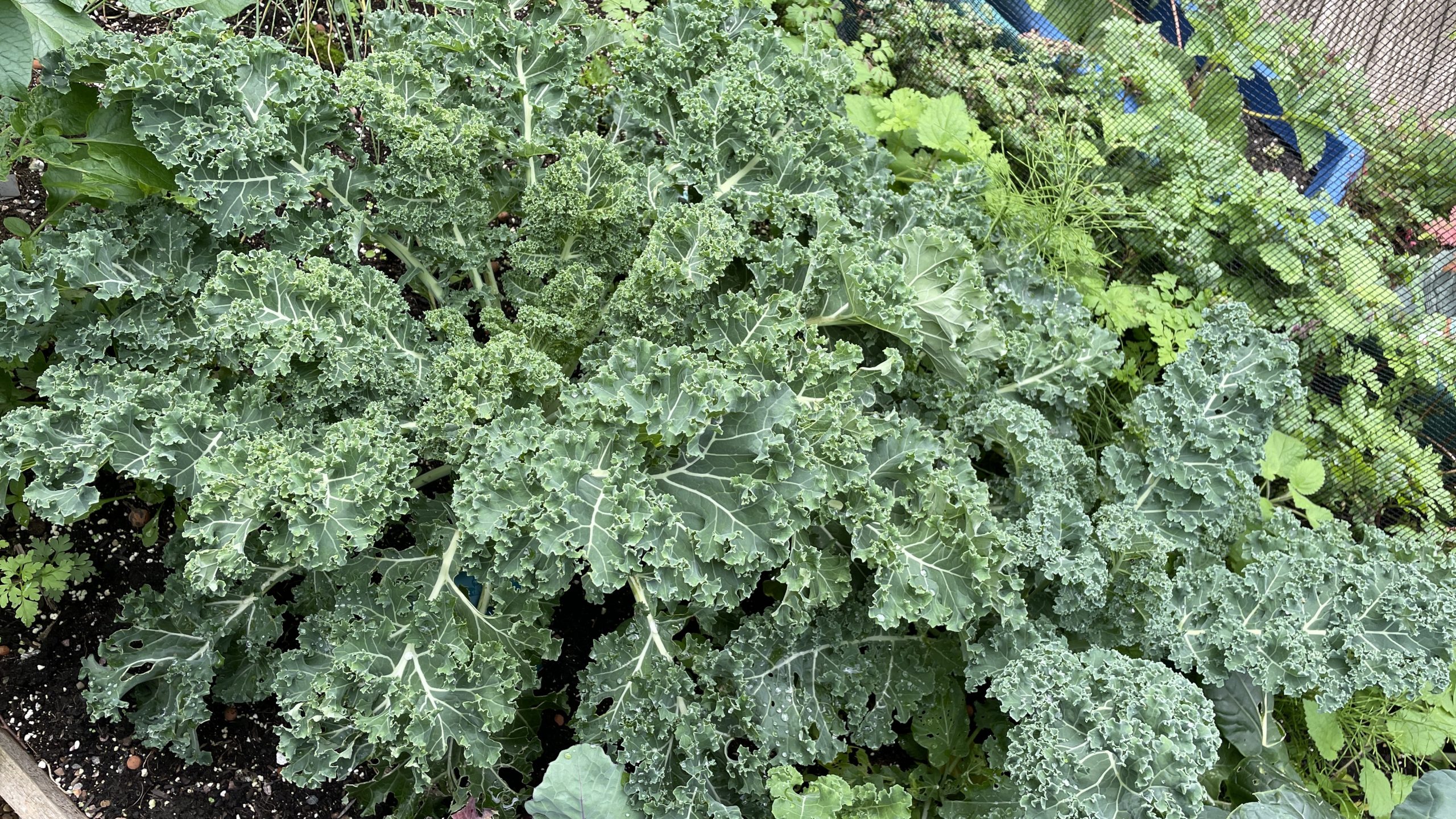
kale plant 20/8/21
Space Efficiency / Value for money
As always, I’m interested in the space efficiency of my crops and their value for money. I haven’t been able to find salsify on sale, so I can’t do a value for money analysis on this – although I always place a high value on anything which I can grow that isn’t available in the shops! The kale is still growing and being harvested, so I’ll do an update for this later in the year!
| Crop | Year | Soil Area (m2) | Soil Depth (m) | Annual Harvest (kg) | Mass Yield (kg/m2.d) | £ yield (£/m2.d) | Calorie space* (m2) | Protein space* (m2) |
| Parsnip | 2021 | 0.08 | 0.2 | 0.072 | 0.002857 | 0.0024 | 1125 | 1513 |
| Salsify | 2021 | 0.14 | 0.25 | 0.075 | 0.001914 | ? | 2021 | 1256 |
| Brussel Sprouts | 2021 | 0.5 | 0.2 | 0.185 | 0.001175 | 0.0073 | 5480 | 1912 |
| Kale | 2021 | 1 | 0.2 | ** | ** | ** | ** | ** |